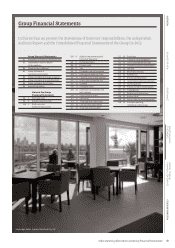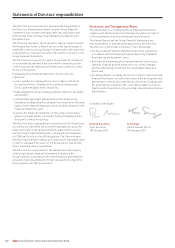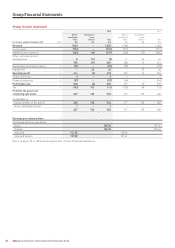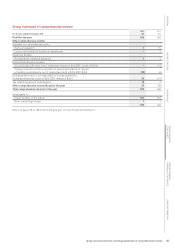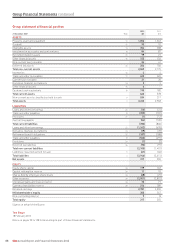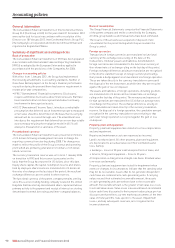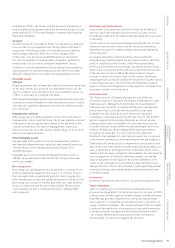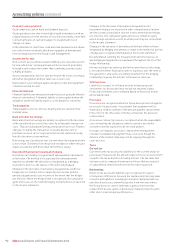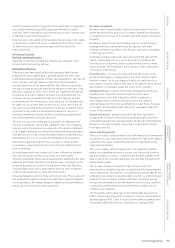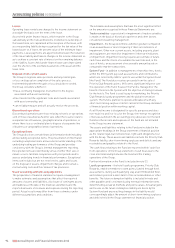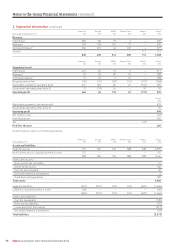Holiday Inn 2012 Annual Report Download - page 92
Download and view the complete annual report
Please find page 92 of the 2012 Holiday Inn annual report below. You can navigate through the pages in the report by either clicking on the pages listed below, or by using the keyword search tool below to find specific information within the annual report.
90 IHG Annual Report and Financial Statements 2012
General information
The Consolidated Financial Statements of InterContinental Hotels
Group PLC (the Group or IHG) for the year ended 31 December 2012
were authorised for issue in accordance with a resolution of the
Directors on 18 February 2013. InterContinental Hotels Group PLC
(the Company) is incorporated and domiciled in Great Britain and
registered in England and Wales.
Summary of significant accounting policies
Basis of preparation
The Consolidated Financial Statements of IHG have been prepared
in accordance with International Financial Reporting Standards
(IFRSs) as adopted by the European Union and as applied in
accordance with the provisions of the Companies Act 2006.
Changes in accounting policies
With effect from 1 January 2012, the Group has implemented
the following amendments to accounting standards. Neither of
these have had any impact on the Group’s financial performance
or position during the year and there has been no requirement to
restate prior year comparatives.
• IFRS 7 (Amendment) ‘Financial Instruments: Disclosures’,
requires additional disclosures about financial assets that have
been transferred but not derecognised and about continuing
involvement in derecognised assets.
• IAS 12 (Amendment) ‘Income Taxes’, introduces a rebuttable
presumption that deferred tax on investment property measured
at fair value should be determined on the basis that its carrying
amount will be recovered through sale. The amendment also
introduces the requirement that deferred tax on non-depreciable
assets measured using the revaluation model in IAS 16 will
always be measured on a sale basis of the asset.
Presentational currency
The Consolidated Financial Statements are presented in millions
of US dollars following a management decision to change the
reporting currency from sterling during 2008. The change was
made to reflect the profile of the Group’s revenue and operating
profit which are primarily generated in US dollars or US dollar-
linked currencies.
The currency translation reserve was set to nil at 1 January 2004
on transition to IFRS and this reserve is presented on the
basis that the Group has reported in US dollars since this date.
Equity share capital, the capital redemption reserve and shares
held by employee share trusts are translated into US dollars at
the rates of exchange on the last day of the period; the resultant
exchange differences are recorded in other reserves.
The functional currency of the parent company remains sterling
since this is a non-trading holding company located in the United
Kingdom that has sterling denominated share capital and whose
primary activity is the payment and receipt of interest on sterling
denominated external borrowings and inter-company balances.
Basis of consolidation
The Group Financial Statements comprise the Financial Statements
of the parent company and entities controlled by the Company.
All intra-group balances and transactions have been eliminated.
The results of those businesses acquired or disposed of are
consolidated for the period during which they were under the
Group’s control.
Foreign currencies
Transactions in foreign currencies are translated to functional
currency at the exchange rates ruling on the dates of the
transactions. Monetary assets and liabilities denominated in
foreign currencies are retranslated to the functional currency at
the relevant rates of exchange ruling on the last day of the period.
Foreign exchange differences arising on translation are recognised
in the income statement except on foreign currency borrowings
that provide a hedge against a net investment in a foreign operation.
These are taken directly to the currency translation reserve until
the disposal of the net investment, at which time they are recycled
against the gain or loss on disposal.
The assets and liabilities of foreign operations, including goodwill,
are translated into US dollars at the relevant rates of exchange
ruling on the last day of the period. The revenues and expenses of
foreign operations are translated into US dollars at average rates
of exchange for the period. The exchange differences arising on
the retranslation are taken directly to the currency translation
reserve. On disposal of a foreign operation, the cumulative amount
recognised in the currency translation reserve relating to that
particular foreign operation is recycled against the gain or loss
on disposal.
Property, plant and equipment
Property, plant and equipment are stated at cost less depreciation
and any impairment.
Repairs and maintenance costs are expensed as incurred.
Land is not depreciated. All other property, plant and equipment
are depreciated to a residual value over their estimated useful
lives, namely:
• buildings – lesser of 50 years and unexpired term of lease; and
• fixtures, fittings and equipment – three to 25 years.
All depreciation is charged on a straight-line basis. Residual value
is re-assessed annually.
Property, plant and equipment are tested for impairment when
events or changes in circumstances indicate that the carrying value
may not be recoverable. Assets that do not generate independent
cash flows are combined into cash-generating units. If carrying
values exceed their estimated recoverable amount, the assets
or cash-generating units are written down to the recoverable
amount. Recoverable amount is the greater of fair value less costs
to sell and value in use. Value in use is assessed based on estimated
future cash flows discounted to their present value using a pre-tax
discount rate that reflects current market assessments of the time
value of money and the risks specific to the asset. Impairment
losses, and any subsequent reversals, are recognised in the
income statement.
Accounting policies



